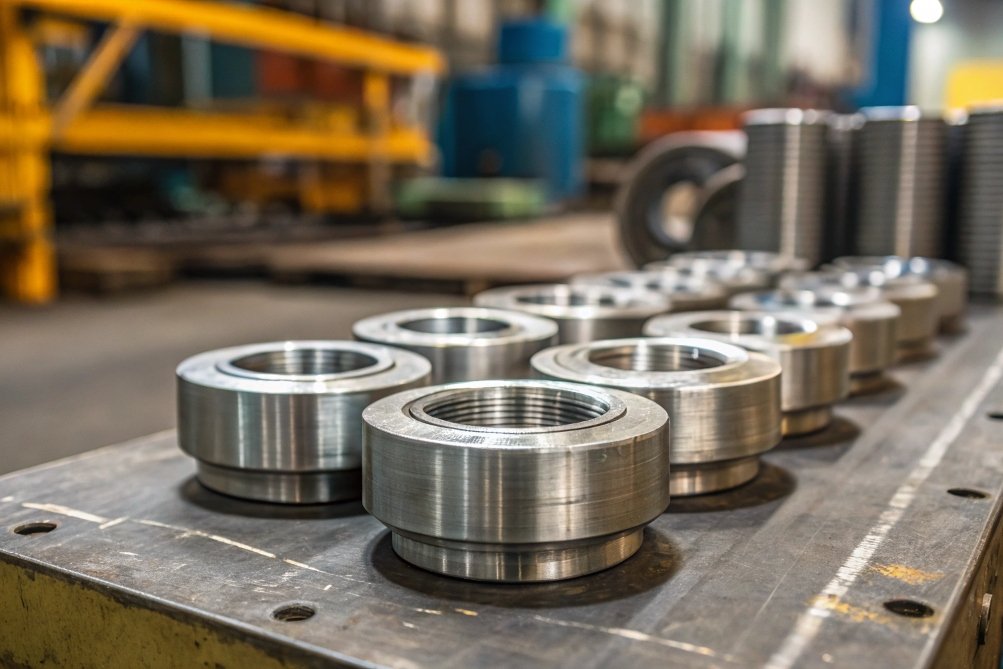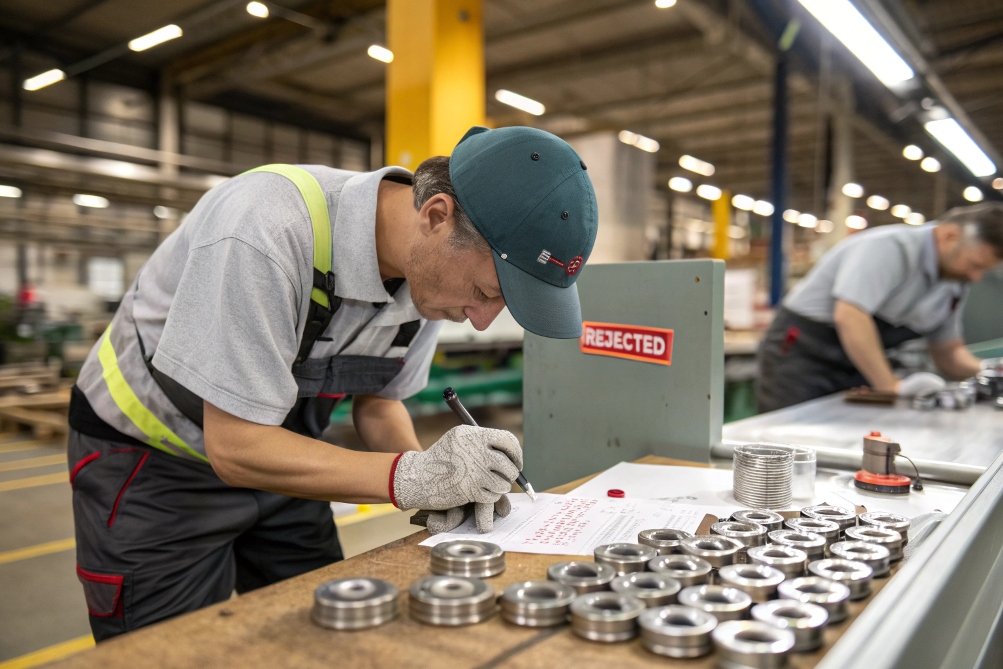
When sourcing metal parts from overseas suppliers, quality control1 becomes a critical aspect of ensuring the final product meets your specifications. I’ve faced challenges with quality issues in imported parts that could have been avoided with better planning and due diligence. In many cases, issues such as material defects, dimensional inconsistencies, or non-compliance with industry standards can cause significant delays and costs.
Preventing quality issues in imported metal parts requires a thorough inspection process, clear communication with suppliers, and utilizing third-party inspection services2 to verify compliance before the parts arrive.
This article will dive into common quality issues faced when importing metal parts, the steps you can take to ensure quality, and why regular inspections are essential to prevent costly mistakes.
What Are the Common Quality Issues with Imported Metal Parts?

Imported metal parts can encounter various quality issues, ranging from material defects to dimensional inaccuracies3. Understanding these common problems will allow you to take proactive steps to avoid them.
Common Quality Issues with Imported Metal Parts
| Quality Issue | Description |
|---|---|
| Material Defects | The metal used may have impurities, poor composition, or inconsistent hardness. |
| Dimensional Inaccuracies | Parts may not meet the specified dimensions, leading to assembly or functionality problems. |
| Surface Imperfections | Scratches, dents, or discoloration on the surface of the metal parts. |
| Poor Coating or Plating | The finish, whether powder coating or plating, may not be uniform or durable. |
| Non-Compliance with Standards | Parts may not meet industry standards or certification requirements, affecting their use in specific applications. |
Why These Issues Matter
In my experience, even minor quality issues can lead to major complications down the line. For example, a dimensional error can cause assembly problems or require costly rework. Additionally, poor material quality may result in a shorter lifespan for the parts. Identifying and addressing these issues early is crucial to prevent expensive delays and ensure the success of your project.
How Can You Ensure the Quality of Imported Parts Before They Arrive?

To prevent quality issues with imported metal parts, you need to implement an effective quality assurance strategy. This includes verifying material specifications, conducting pre-shipment inspections, and choosing the right suppliers who are committed to high-quality standards.
Steps to Ensure Quality Before Parts Arrive
| Step | Action |
|---|---|
| Supplier Audits | Conduct factory audits to assess their capabilities, equipment, and quality management systems. |
| Pre-shipment Inspection | Hire third-party inspection services to check the parts before they are shipped to ensure compliance with your specifications. |
| Material Certification | Request certificates of material compliance, such as mill certificates or test reports, to verify the material’s properties. |
| Sample Approval | Always request sample parts before placing large orders to verify quality before full-scale production begins. |
| Clear Specifications | Provide clear, detailed specifications to your supplier to avoid any confusion about material properties, tolerances, and finishes. |
How These Steps Help Prevent Issues
By following these steps, you can significantly reduce the risk of receiving faulty parts. When I’ve used third-party inspections or sampled parts before the full order, it has saved me from making expensive mistakes. Ensuring that your suppliers understand the importance of quality and compliance helps you avoid dealing with defective parts later on.
Why Is It Essential to Inspect Imported Parts for Compliance with Specifications?

Inspecting imported parts for compliance with your specifications ensures that the parts will function properly, meet industry standards, and prevent delays in production. Compliance checks should be a non-negotiable part of the sourcing process.
Importance of Inspections for Compliance
| Reason | Why It Matters |
|---|---|
| Ensures Functional Performance | Non-compliant parts may not perform as expected, affecting the quality of your final product. |
| Reduces Risk of Non-Compliance | Failing to meet industry standards can result in legal or safety issues, especially for critical components. |
| Minimizes Rework and Waste | Catching non-compliant parts early helps avoid costly rework or disposal of unusable parts. |
| Prevents Production Delays | Verifying compliance before shipment ensures that the parts will meet your production schedule. |
| Maintains Reputation | Consistently receiving compliant parts helps maintain your company’s reputation for quality. |
The Impact of Compliance Checks
In my experience, regular inspections and compliance checks have been key in maintaining production timelines. When parts fail to meet specifications, it often leads to production halts or delays. Having a thorough inspection process in place prevents these disruptions, allowing your operations to run smoothly and efficiently.
Conclusion
Preventing quality issues in imported metal parts requires proactive steps such as conducting supplier audits, ensuring detailed specifications, and performing pre-shipment inspections. By incorporating these quality control measures into your procurement process, you can minimize the risk of receiving defective parts, avoid production delays, and maintain a high standard of quality for your final products.
Understanding quality control practices can help you avoid costly mistakes and ensure your imported metal parts meet specifications. ↩
Exploring third-party inspection services can provide insights into ensuring compliance and quality before parts arrive. ↩
Learning about dimensional inaccuracies can help you implement effective measures to prevent assembly issues and rework costs. ↩

